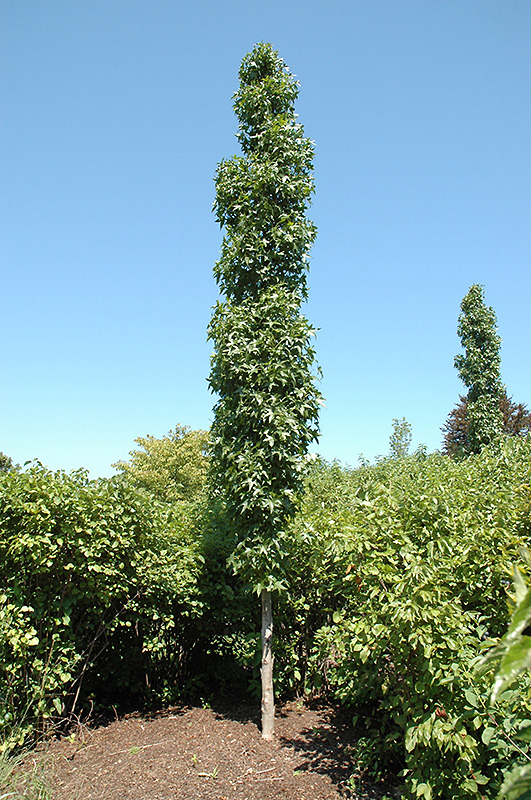>> Home
Cherokee Sweet Gum
Liquidambar styraciflua 'Ward'
Height: 50 feet
Spread: 30 feet
Sunlight:
![]()
Hardiness Zone: 4b
Other Names: American Sweet Gum
Description:
A tall, spreading shade tree with interestingly shaped leaves that turn red to deep burgundy in fall; somewhat particular about growing conditions; this variety is virtually seedles with none of the mess normally associated with Sweetgums
Ornamental Features
Cherokee Sweet Gum has forest green deciduous foliage on a tree with an oval habit of growth. The lobed palmate leaves turn an outstanding crimson in the fall.
Landscape Attributes
Cherokee Sweet Gum is a deciduous tree with a strong central leader and a shapely oval form. Its average texture blends into the landscape, but can be balanced by one or two finer or coarser trees or shrubs for an effective composition.
This tree will require occasional maintenance and upkeep, and is best pruned in late winter once the threat of extreme cold has passed. Deer don't particularly care for this plant and will usually leave it alone in favor of tastier treats. It has no significant negative characteristics.
Cherokee Sweet Gum is recommended for the following landscape applications;
- Accent
- Shade
Planting & Growing
Cherokee Sweet Gum will grow to be about 50 feet tall at maturity, with a spread of 30 feet. It has a high canopy of foliage that sits well above the ground, and should not be planted underneath power lines. As it matures, the lower branches of this tree can be strategically removed to create a high enough canopy to support unobstructed human traffic underneath. It grows at a fast rate, and under ideal conditions can be expected to live for 80 years or more.
This tree should only be grown in full sunlight. It prefers to grow in average to moist conditions, and shouldn't be allowed to dry out. It is very fussy about its soil conditions and must have rich, acidic soils to ensure success, and is subject to chlorosis (yellowing) of the foliage in alkaline soils. It is somewhat tolerant of urban pollution. This is a selection of a native North American species.
